The ultimate stakes of Rome’s last civil war lay on the sea: who would control grain routes, island bases, and the straits that fed armies and cities? This article asks a direct question: how did Marcus Agrippa—Octavian’s indispensable admiral, builder, and field commander—turn naval superiority into durable power, culminating at Actium (31 av. J.-C.) and extending to Pannonia, to underpin the Roman Empire?
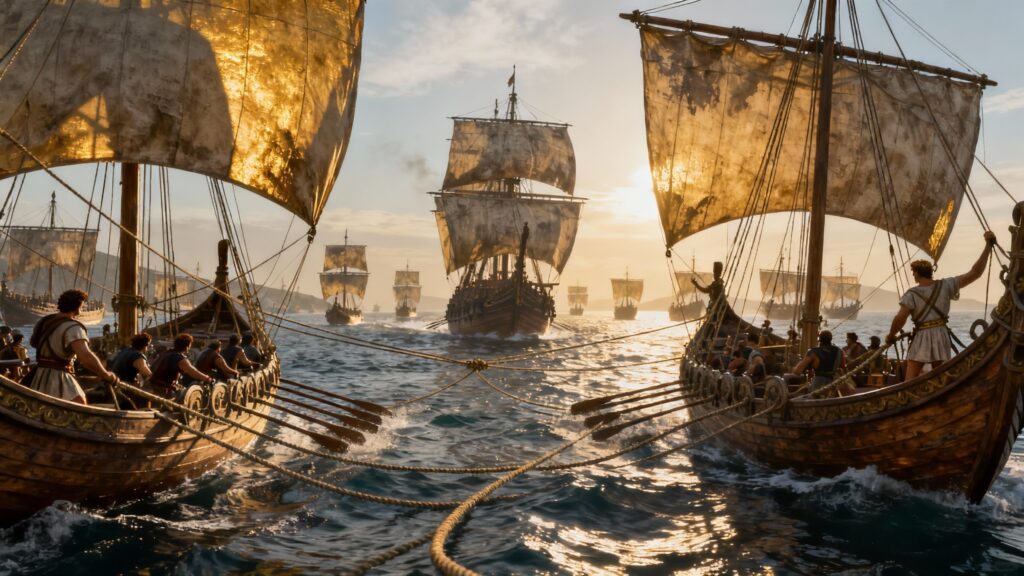
Dawn over Actium, a New Order at Sea
Shortly after dawn on the waters off Actium (31 av. J.-C.), the sea breeze freshened just enough for sails to be a temptation and a risk. Antony’s massive quinqueremes loomed like fortresses; Octavian’s line, tighter and lower on the water, held its nerve. Out ahead ranged Marcus Agrippa’s liburnians—fast, oar-hungry, sparing of ornament but rich in purpose. Their objectives were mundane and decisive: deny Antony a wind he could use, drive him off his chosen ground, and force him into a slow-motion defeat—one cable, one shoreline base, one captured crew at a time.
This scene frames a thesis and a method. The thesis: Agrippa’s sea power—hard-won at Naulochus (36 av. J.-C.), perfected in the campaign of 31 av. J.-C., and institutionalized afterward—transformed Octavian’s claim from a partisan aspiration into an imperial order. The method: an operational design that combined technical innovation (harpax, port training grounds), base networks (Portus Iulius to the Ionian), and logistics pressure (blockades, coastal seizures), reinforced by calibrated propaganda that recast civil war as a foreign threat.
The plan is threefold. First, the context that made Agrippa’s path possible: Roman vulnerability at sea and the politics of supply. Second, a documented narrative of campaigns from Sextus Pompey to Actium and into Pannonia. Third, an analysis of causality and an historiographical debate about whether Actium “made” the Empire—or whether Agrippa’s broader system did. Consequences and legacies close the circle.
A Political Navy for a Continental Power
Marcus Vipsanius Agrippa did not inherit power; he built it. Born to an equestrian family, he rose beside Octavian in the chaos after Julius Caesar’s assassination (44 av. J.-C.). The young Octavian possessed legal claim and ruthless will; Agrippa supplied the technical and organizational heft. When Velleius Paterculus later called him “a man of the highest ability,” he measured more than courage; he meant an aptitude for turning a weak hand into systemic advantage.
Rome before Agrippa was a continental power awkward at sea. In earlier centuries, emergency improvisations—like the corvus boarding bridge in the First Punic War—substituted for maritime culture. By the 40s av. J.-C., Rome was a sprawling Mediterranean hegemon dependent on sea-borne grain yet intermittently dominated by maritime specialists—pirates first, then Sextus Pompey, whose fleet leveraged Sicily, Sardinia, and the sea lanes to starve Italy and constrain coastal movement. Antony and Cleopatra, ruling from Alexandria, understood the sea differently: as a platform for wealth and projection.
Octavian’s dilemma after Philippi (42 av. J.-C.) was stark. Without a navy he could not feed Rome reliably, threaten island bases, or challenge Antony’s alliance with Cleopatra. Agrippa’s solution began with infrastructure and training. In 37 av. J.-C., he cut channels linking Lake Avernus and the Lucrine Lake to the sea near Baiae, creating Portus Iulius: a vast, sheltered complex where crews could drill under cover, ships could be built and repaired, and new devices tested. It was a navy factory and a campus of practical learning. The point was not a single decisive battle but the production of an adaptable force.
The first proving ground was Sextus Pompey. Agrippa’s task was to degrade Sextus’s maritime grip without catastrophic risk. He introduced the harpax—a catapult-launched grappling hook on a light, strong rope—designed to neutralize heavier, towered warships whose bulk had become a liability. Dio Cassius emphasizes the novelty: “He used a new device, the harpax, which could not be easily cut” (Dio, Roman History). With Portus Iulius as both incubator and launch point, Agrippa reshaped the tactical grammar of naval fights, privileging maneuver and training over mass and ornament.
There was politics in this engineering. Every canal cut and every harbor outfit signaled Octavian’s claim to protect Italy’s stomach and Rome’s safety. The stakes were existential: famine bred demagoguery, and sea denial by a rival undermined legitimacy. Agrippa’s rise thus intersected policy, logistics, and narrative. He became Octavian’s executor of necessity.
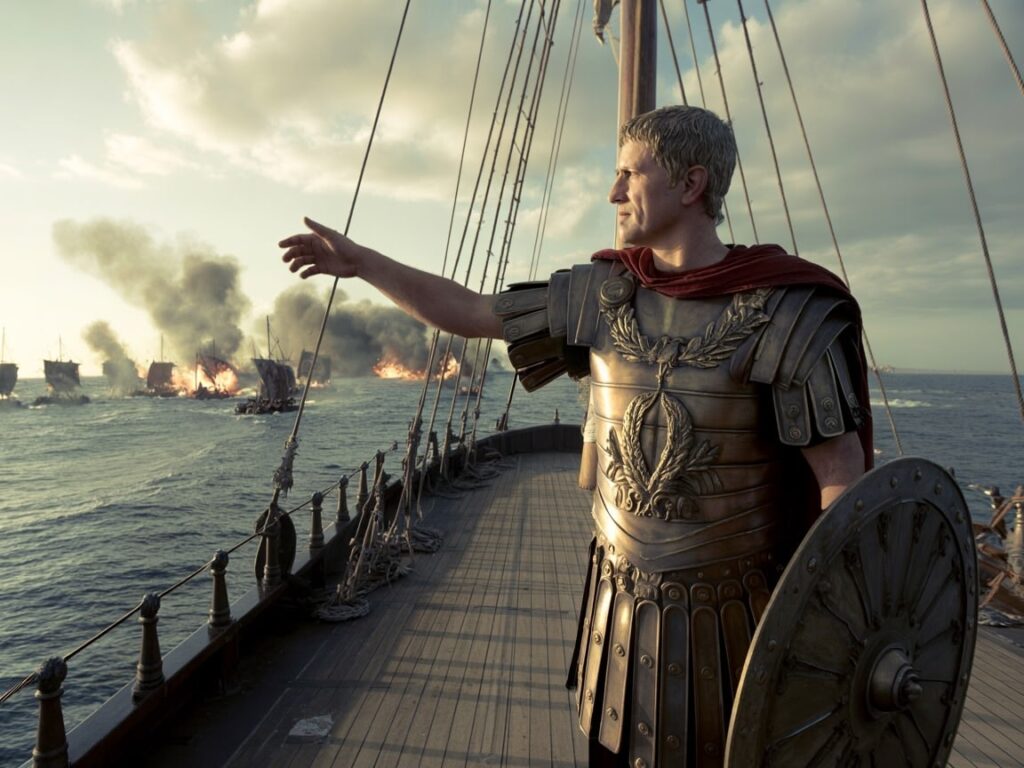
From Naulochus to Actium and Beyond
The Naulochus campaign (36 av. J.-C.) was Agrippa’s first major demonstration of the system he was building. Sextus Pompey’s fleet, entrenched in Sicily and confident in its seamanship, had frustrated earlier, more conventional assaults. Agrippa began by eroding Sextus’s operational depth. He seized and fortified positions along the Sicilian littoral, cut amphibious mobility, and attacked detachments rather than courting a general action too soon. When the fleets finally met off Naulochus, Agrippa’s crews exploited the harpax. Boarded, pinned, and cut off from mutual support, Sextus’s ships lost their advantage of mass and elevation. Velleius Paterculus notes the rupture this represented, as a small, disciplined navy unstitched an established sea lord. The result was more than victory; it was the end of famine as a political weapon in Italy.
The lessons of Naulochus—preparation, training, and coercive control of littorals—shaped the Ionian campaign against Antony. In early 31 av. J.-C., Octavian and Agrippa established bases along the eastern Adriatic and Ionian coastlines, using friendly harbors and fortified anchorages to shorten their supply lines. Agrippa struck first at Antony’s periphery: Methone in Messenia fell, then the islands and ports guarding the Ambracian Gulf. Plutarch, in his Life of Antony, stresses the cumulative effect of these seizures: “He [Agrippa] took the fortress at Methone and cut Antony’s friends from their resources.” Each captured base both denied Antony fuel and forage and gave Octavian a point from which to harvest prisoners, pilots, and intelligence.
Antony had chosen Actium as a fortified camp to protect his fleet and maintain contact with Egypt. He possessed heavier ships, exceptional marines, and a land army in being. He lacked food. Agrippa’s mobile squadrons harassed supply ships, forced escorts to concentrate, and used their speed to dictate tempo. The summer heat aggravated disease in Antony’s camp; desertions multiplied; the calculus shifted from a set-piece land duel to a maritime problem Antony could not solve without fighting on Agrippa’s terms.
On 2 September (31 av. J.-C.), the fleets formed. Octavian’s ships, many of them liburnians learned from the Adriatic, presented low silhouettes and trained crews. Antony’s line extended, distended by the difficulty of bringing large hulls to bear in constricted waters. Cleopatra’s squadron hovered behind, rigging ready. Agrippa’s subordinates pushed and probed. The harpax again allowed lighter ships to immobilize heavier foes. Crucially, Agrippa’s broader strategy—months of attritional seizures—meant Antony fought under logistical duress.
Cleopatra’s breakout, with Antony following, is remembered as betrayal; it was also a calculation that the sea could yet be a highway to Egypt and survival. Octavian’s line did not chase the fast, lightly laden royal squadron; it destroyed what remained. The result was strategic paralysis for Antony’s cause. Alexandria fell in 30 av. J.-C.; Antony and Cleopatra died; Octavian claimed the spoils—treasures, men, and the authority of peace.
Agrippa’s role did not end with Actium. In the 20s av. J.-C., he governed Gaul, built roads, reorganized tribes, and pacified Aquitania. He brought to civilian tasks the same systematic approach he had honed at sea: survey, build, integrate. In 19 av. J.-C., granted proconsular imperium and later tribunician power, he functioned as Augustus’s partner in governance. He built, or rebuilt, Rome itself—most famously the Pantheon, whose surviving inscription preserves his name. These architectural works were political statements: stability embodied in stone.
The Pannonian frontier tested different skills. In 13–12 av. J.-C., unrest in Illyricum and Pannonia threatened the Danubian line. Augustus dispatched Agrippa, who moved with characteristic energy. He reportedly took the unusual step of refusing triumphal honors earlier in his career; he now sought results, not spectacle. Operating along rivers and through mountainous approaches, he stabilized the theater. The “conquest of Pannonia” was in truth a multi-decade process, culminating only under Tiberius after Agrippa’s death (12 av. J.-C.), but Agrippa’s campaign mattered: it plugged a gap, shaped provincial boundaries, and reinforced the imperial habit of forward defense through infrastructure and negotiated submission.
If Actium declared the political reality of a new order, Pannonia confirmed its geographic ambition. Together they expressed Agrippa’s gift: to make strategic maps and material systems line up with political ends.
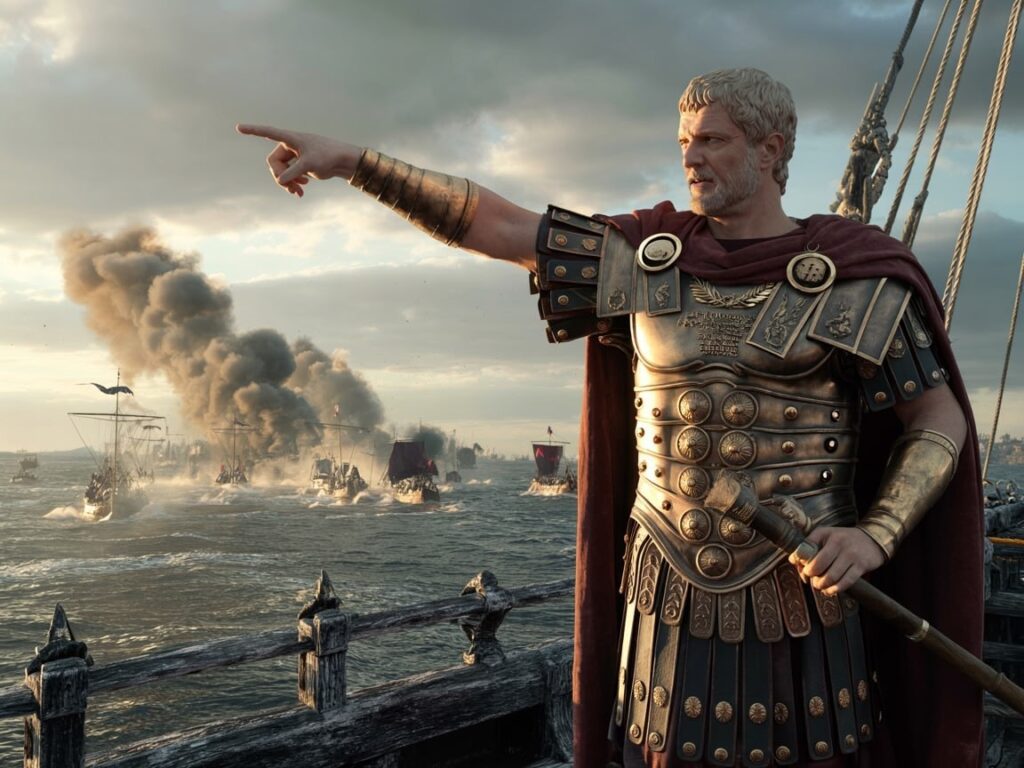
How a Navy Made a Principate
Agrippa’s success flowed from a coherent logic in which technology, training, bases, and narrative were inseparable. Each element reinforced the others, producing compounding returns that outlasted a single campaign.
- Bases and littoral control. Portus Iulius was not an isolated marvel; it was the first node of a naval network that reached across the Tyrrhenian and the Adriatic. By creating depth in harbor infrastructure, Agrippa reduced operational risk, compressed transit times, and multiplied the number of points from which to threaten enemy movements. Coastal seizures in 31 av. J.-C. replicated the method forward, progressively turning Antony’s operating area into a cage.
- Training as technology. Ancient fleets often rose and fell on the skill of rowers and the speed with which crews could coordinate boarding, ramming, and repair. Portus Iulius institutionalized maritime training at scale. The harpax is instructive: it was a technology that needed disciplined handling, practiced teamwork, and integration with maneuver. A clever device without drilled crews is a rumor; Agrippa made it doctrine.
- Fleet composition and adaptability. He privileged smaller, more numerous hulls capable of quick concentration, pursuit, and interdiction—the Adriatic liburnian became emblematic. This choice traded spectacle for control. The heavy towered ships of Antony were visually imposing but tactically brittle in constrained waters, especially when starved of provisions and hemmed in by nimble opponents.
- Logistics as a weapon. By treating the enemy’s forage, water, and grain as a center of gravity, Agrippa turned coastal raids and island seizures into strategic levers. Methone, Leucas, and Patrae were not trophies; they were valves that manipulated the flow of supplies and confidence. As the campaign wore on, disease and desertion were not accidents; they were the predictable fruits of constrained logistics.
- Intelligence and attrition. Prisoners yielded pilots, charts, and gossip. Coastal populations hedged bets. Agrippa’s method gathered information as it inflicted losses, and the two effects compounded. Antony’s “choice” of battle was in reality an act of desperation created by months of being cornered.
- Narrative alignment. Octavian’s propaganda recast the civil war as a conflict against Cleopatra’s foreign domination, allowing victories at sea to stand for the defense of Rome’s identity and the restoration of order. Agrippa’s naval campaign thus fed a political story in which famine relief, maritime security, and cultural reassurance converged. The regime that followed—a Principate cloaked in republican ritual—depended on that convergence.
The same causal grammar carried into the north. In Pannonia, infrastructure—roads, river crossings, forts—served the same function as harbor nodes had at sea: risk reduction and tempo control. Where the harpax immobilized ships, bridges immobilized tribes. Where sea blockades starved Antony’s camp, supply depots starved insurgency. Agrippa’s genius was not confined to salt water; it was an institutional habit—engineer the environment, then maneuver within the system you have built.
One final causal thread concerns legitimacy. Agrippa repeatedly refused excessive honors and publicly subordinated himself to Augustus. This asymmetry sustained the Principate’s fragile fiction that Augustus was first among equals, not a king. By standing as “the indispensable subordinate,” Agrippa made monarchy palatable without naming it. The power that sea victory conferred did not curdle into a rival pole of authority. In effect, Agrippa’s character was part of the regime’s architecture.
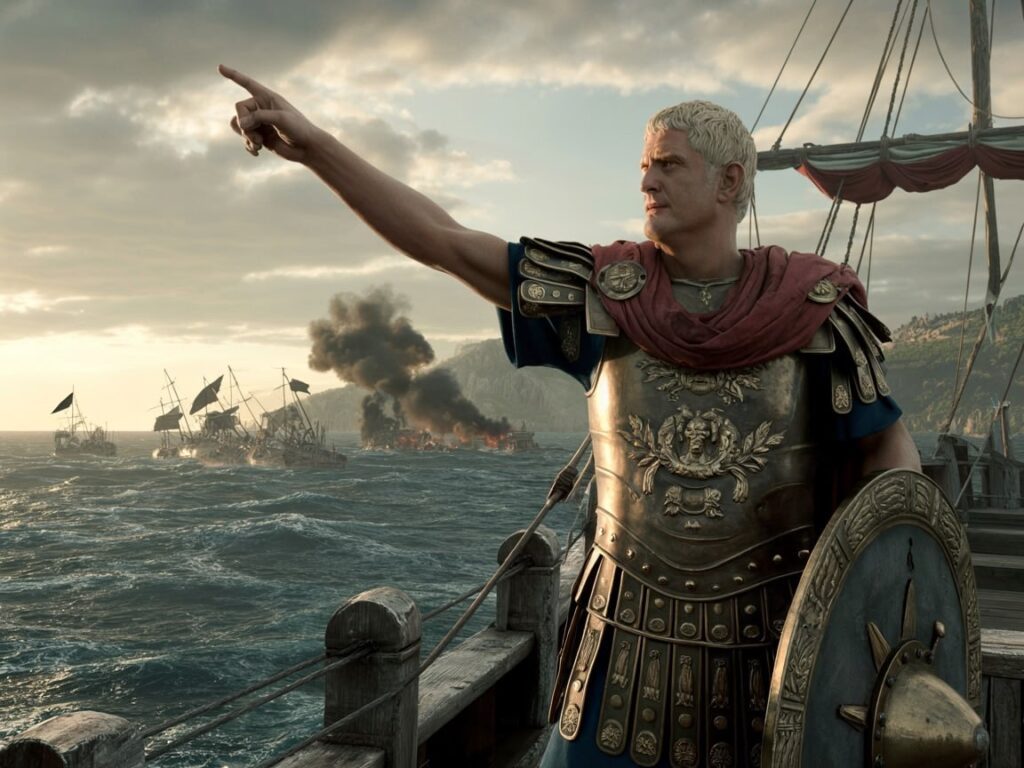
Did Actium Create the Empire?
Ancient narratives and modern analyses converge on the importance of Actium but diverge on what, precisely, it meant—and whether it “created” the Empire or merely revealed an already established supremacy.
- The “decisive battle” view. Plutarch’s moralized portrait of Antony, Dio Cassius’s structured account of the campaign, and the Augustan Res Gestae project Actium as a singular hinge of history. They emphasize Cleopatra’s flight, Antony’s collapse, and Octavian’s clemency to underscore a vision of providential order. In this reading, Agrippa is the general who won the crucial battle that unlocked Alexandria and, with it, a new regime.
- The “campaign of attrition” view. Modern military historians and classicists often stress the months-long conquest of bases and the strangulation of Antony’s supply lines. On this view, Actium was the formalization of a decision already reached in August and early September (31 av. J.-C.): the sea and its periphery belonged to Agrippa, and Antony’s position was untenable. The naval engagement was decisive because the system around it had made it so. The “decisive” label stands, but its content shifts from a single afternoon to a campaign design.
- The technology debate. Dio Cassius highlights the harpax, but skeptics note that no device works without doctrine. Some argue that the harpax’s psychological effect—undermining the confidence of crews in heavy ships—mattered more than its material lethality. Others counter that the weapon’s persistence against cutting and fire was a meaningful shift away from earlier corvus-style boarding. The balance of evidence suggests technology mattered as a multiplier of training and fleet composition.
- Cleopatra and agency. Ancient authors, eager to validate Octavian’s propaganda, accent Cleopatra’s role in a “foreign war.” Modern scholars resist the reduction. Antony had agency; his strategic errors—overreliance on heavy ships, choice of Actium as a base under poor supply, slow adaptation—are his. Cleopatra’s departure may have been prearranged as a contingency. The drama of betrayal, so potent in Roman moralizing literature, risks obscuring operational realities.
- Pannonia and the language of “conquest.” To call Agrippa the “conqueror of Pannonia” is to compress a long process. He stabilized and imposed terms in 13–12 av. J.-C., but durable subjugation took decades, with the Great Illyrian Revolt (6–9 apr. J.-C.) testing the system anew. Historians debate how to apportion credit among Agrippa, Tiberius, and later commanders. The sober conclusion: Agrippa was decisive in establishing methods—mobility, infrastructure, negotiated submission—that others completed.
- Memory and modesty. Suetonius and Velleius emphasize Agrippa’s loyalty and refusal of extravagant public honors. Some modern scholars ask whether this is retrospective idealization, crafted to flatter the Augustan project. Yet the institutional facts—tribunician power shared, proconsular imperium delegated, marriage to Julia—testify that Augustus trusted nothing and no one more. The image of the indispensable lieutenant is not merely literary; it is structural.
Perhaps the most interesting controversy is not whether Actium “created” the Empire but whether Agrippa’s quieter achievements—the harbor dug in 37 av. J.-C., the road aligned in Gaul, the bridge laid in Pannonia—are the more imperial acts. Battles crown systems. Agrippa built the systems.
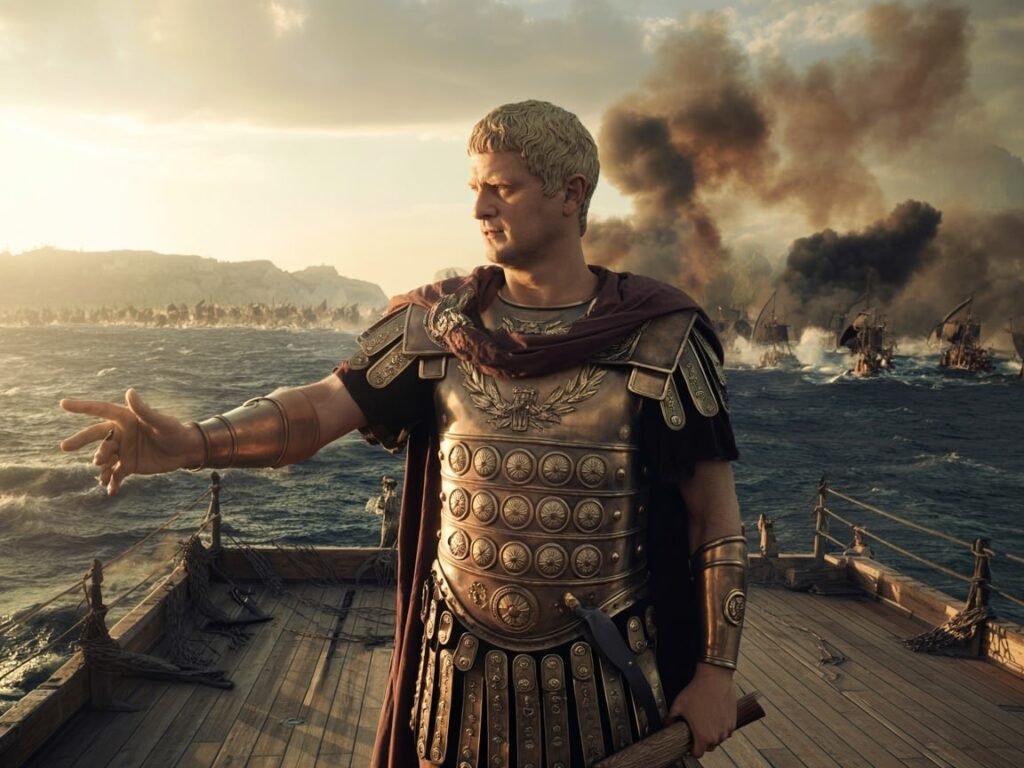
Institutions from Sea to Stone
Agrippa’s legacies ripple across three domains: maritime security, imperial administration, and Rome’s built environment.
- Maritime security and the Roman navy. The professionalization that Agrippa advanced—training cadres, standardized drills, and permanent bases at Misenum and, later, Ravenna—outlived him. The Mediterranean became, for centuries, a space of Roman routine. Piracy receded; grain convoys sailed seasonally with confidence; islands once strategic now became logistical footnotes. The Roman navy never rivaled the legions in prestige, but its quiet dominance was a prerequisite for the Pax Augusta. It protected not only coasts but also the credibility of imperial promises about bread and peace.
- Administrative habits that expand power. In Gaul, Agrippa’s road-building and river engineering knit disparate communities into a fiscal and military network. In Pannonia, he demonstrated the Roman preference for forward defense: fortified lines, reliable crossings, and the incorporation of local elites into a system of benefits and obligations. These are not glamorous legacies, but they are the skeleton of empire. They reveal how a general of fleets could be a civil engineer of political obedience.
- The city as manifesto. Agrippa’s building program in Rome—baths, aqueducts, porticoes, and the first Pantheon—embodied the Augustan claim to have restored the world. The inscription “M·AGRIPPA·L·F·COS·TERTIVM·FECIT” preserves more than a name; it preserves a logic. Water flowed, marble gleamed, and citizens moved through spaces that made stability feel normal. As Frontinus later cataloged aqueducts and their maintenance, he was cataloging the statecraft Agrippa practiced.
- Succession and the human hinge of regime. Augustus adopted Agrippa’s sons, Gaius and Lucius, staging them as heirs. Fate intervened, and Tiberius ultimately succeeded, but the episode shows how deeply Agrippa had been woven into the fabric of dynastic planning. He was not a provincial delegate or a disposable sword; he was partner, co-author, and envisioned patriarch of continuity.
- Cultural memory and strategic templates. Later emperors, from Claudius to Trajan, built harbors and roads with an Agrippan sensibility: engineer first, boast second. The image of the rational, infrastructural Roman state owes as much to Agrippa as to Augustus. Even Hadrian’s rebuilding of the Pantheon—preserving Agrippa’s inscription—attests to a memory that admired the originator’s program more than the ephemeral moment of victory.
In sum, the empire that emerges after 31 av. J.-C. bears Agrippa’s fingerprints: a navy that keeps promises, an administrative grid that makes conquest durable, and monuments that teach citizens what order looks like.
Conclusion: The Quiet Architect of a Maritime Principate
If we seek a single image to summarize Agrippa’s contribution, it is not the climactic melee at Actium; it is the quiet basin of Portus Iulius at dusk, oars creaking in unison, crews rotating through drills, carpenters planing the ribs of a liburnian, and a test harpax arcing from a catapult into tethered timbers. There, years before Actium, the empire’s maritime future became routine.
A clear causal line runs from that basin to the calm discipline of 2 September (31 av. J.-C.): infrastructure enabling training, training enabling doctrine, doctrine enabling victory, victory legitimizing a political form that called itself restored republic but lived as Principate. Agrippa’s strategy made Octavian’s propaganda credible. There is genius in such alignment. A regime that rules by promising peace must make it physically possible. Agrippa did so on the water and then on the land.
Historiography does well to complicate the myth of a single decisive afternoon. It also does well to resist dissolving Actium into mere process. The battle mattered because the system around it was real and because the stakes—grain, movement, morale—were political as much as military. Antony’s defeat and Cleopatra’s flight closed a book; Agrippa’s methods opened a manual.
He died in 12 av. J.-C., not yet old, leaving buildings, roads, ports, and a template: shape environments so that decisions fall your way. Octavian—Augustus—won the Roman Revolution. Agrippa ensured the victory could be administered. In the space between glory and governance, he was the architect.
A Brief Chronology
- 44 av. J.-C.: Julius Caesar assassinated; Octavian and Agrippa align.
- 37 av. J.-C.: Portus Iulius constructed near Baiae for fleet training.
- 36 av. J.-C.: Naulochus; Agrippa defeats Sextus Pompey with harpax tactics.
- 31 av. J.-C.: Actium; Agrippa’s strategy forces Antony to fight; Octavian prevails.
- 30 av. J.-C.: Alexandria falls; end of the civil wars.
- 20–19 av. J.-C.: Agrippa’s powers expanded; major works in Rome and provinces.
- 13–12 av. J.-C.: Campaign in Pannonia stabilizes Danubian frontier.
- 12 av. J.-C.: Agrippa dies; Augustus continues institutional program.
Did Technology Decide Actium?
The harpax fascinates: a catapult-fired grapnel that let light ships pin heavy hulls. Dio Cassius stresses its novelty; skeptics call it a tool within a larger doctrine. What changed was not merely a device but an ecosystem—Portus Iulius training, light liburnians, and a strategy of coastal strangulation. Technology multiplied prepared crews. Without doctrine, the harpax is clever; with it, Antony’s heavy ships became liabilities in confined waters. The balance of evidence suggests synergy, not magic.
Sources
Ancient: Dio Cassius, Roman History (Books 49–51); Plutarch, Life of Antony; Velleius Paterculus, Roman History (Book 2); Appian, Civil Wars; Strabo, Geography; Augustus, Res Gestae; Frontinus, De aquaeductu. Modern: Ronald Syme, The Roman Revolution; Karl Galinsky, Augustan Culture; Barry Strauss, The War that Made the Roman Empire; Adrian Goldsworthy, Augustus; Guy de la Bédoyère, Gladius; John Murray and K. Petsas, Octavian’s Campsite Memorial for the Actian War; J.S. Richardson, The Language of Empire; Werner Eck, The Age of Augustus; J.E. Lendon, Soldiers and Ghosts.

